Complete History of the Duomo
Journey through centuries of architecture, fresco art, and devotion in San Gimignano
Table of Contents
Origins & Consecration
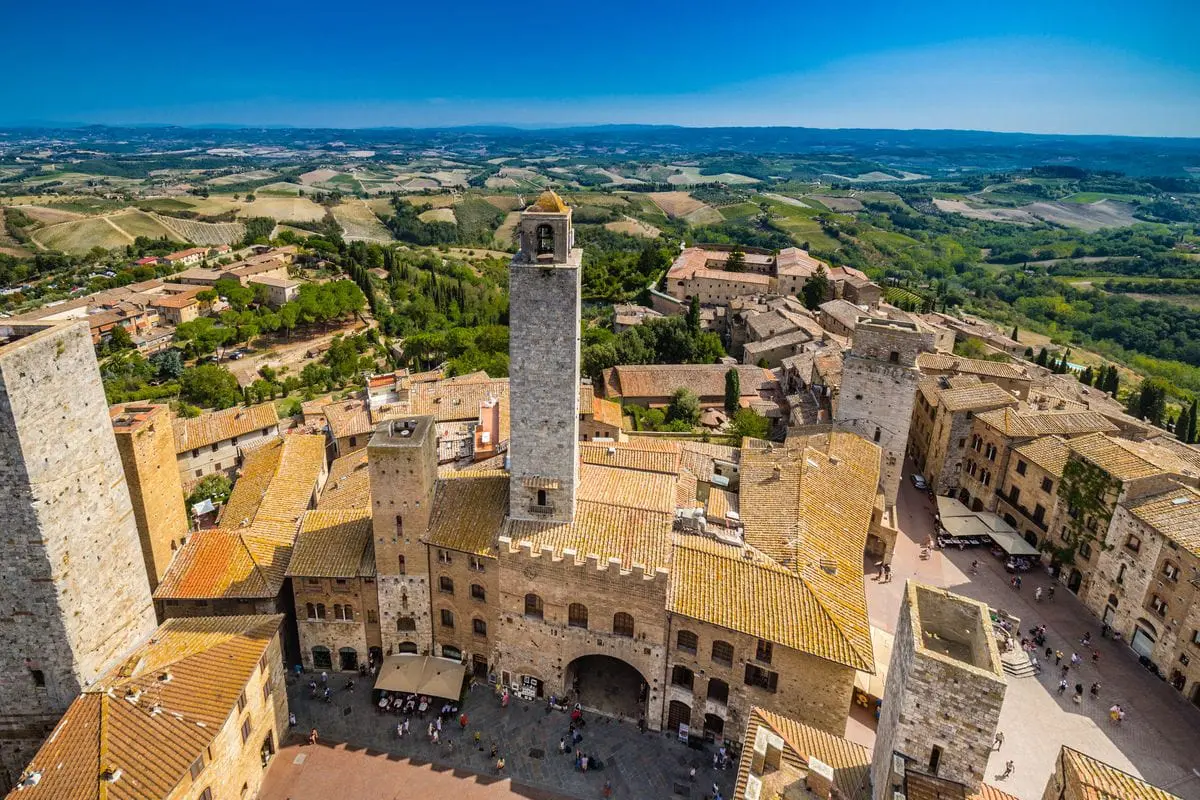
The earliest church on this site dates to before the 12th century. In 1148 the church was consecrated by Pope Eugene III. Over time, it was enlarged and decorated to match the artistic ambitions of the town.
San Gimignano’s position along the Via Francigena and its growing prosperity fueled the desire to adorn its main church with works from the finest artists of Siena and Florence.
Medieval Expansions
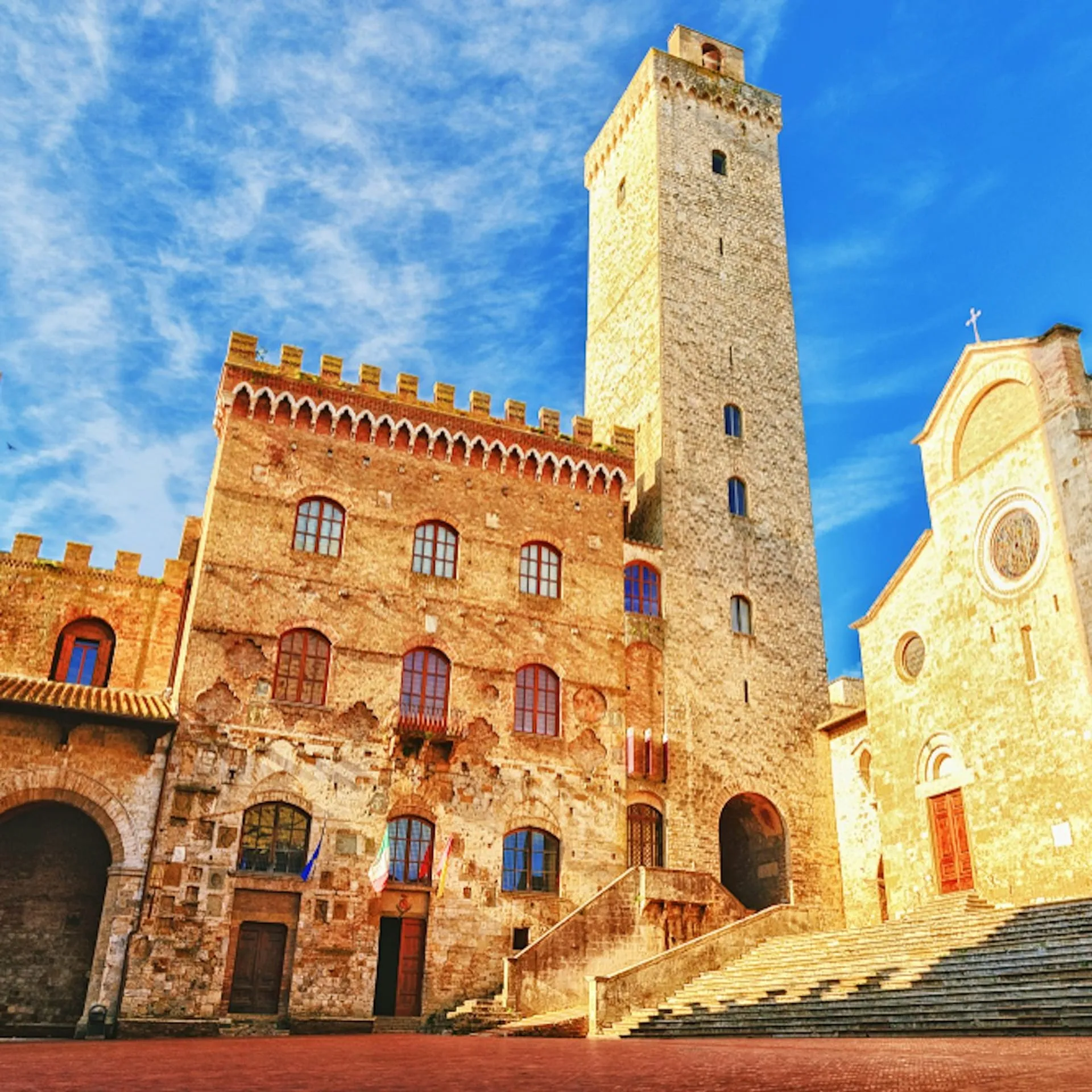
In the 13th and 14th centuries, the church was expanded and restructured. The nave and aisles were extended, and large wall surfaces created ideal for fresco painting.
Leading local families and guilds sponsored chapels and fresco decorations, turning the Duomo into a canvas of civic religious expression.
Fresco Commissions
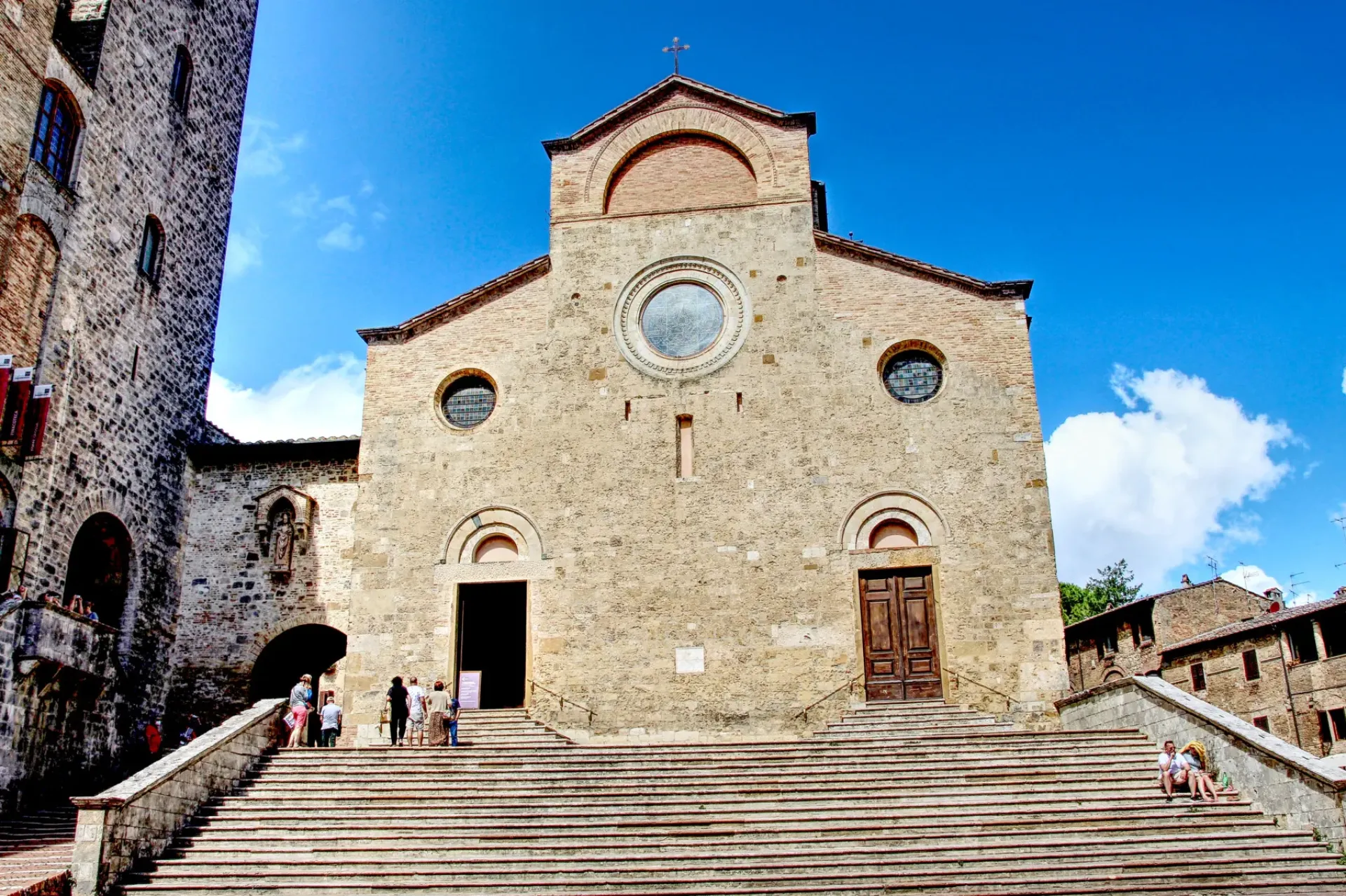
By the mid-14th century, the Old Testament cycle was painted, attributed to Bartolo di Fredi (1367).
Later, New Testament scenes were added by followers of Simone Martini and local painters, culminating in the powerful ‘Last Judgment’ by Taddeo di Bartolo.
Chapel of Saint Fina
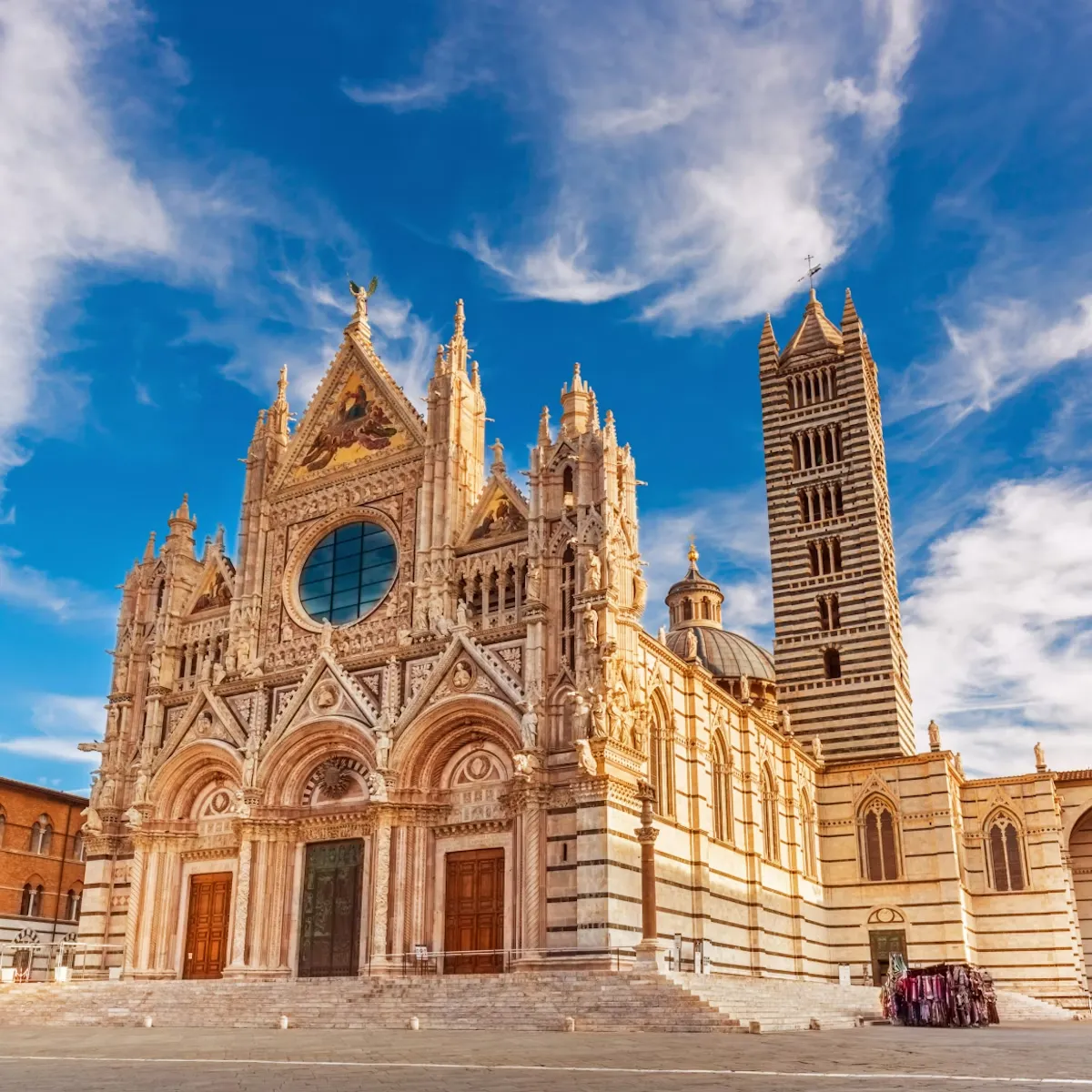
In 1468, the city built the Chapel of Saint Fina to house her relics. Florentine master Domenico Ghirlandaio was commissioned to paint scenes from her life around 1477–78.
The chapel’s interior combines elegant Renaissance style, delicate narrative, and spiritual intimacy that contrasts with the drama of the main fresco cycles.
Artistic Schools & Influences

The Duomo displays a harmonious mix of Sienese, Florentine, and local traditions—especially visible in color palette, figure style, and iconography.
The choice of artists like Ghirlandaio, Bartolo di Fredi, and local patrons reflects San Gimignano’s desire to align with the great cultural centers.
Museum & Collection
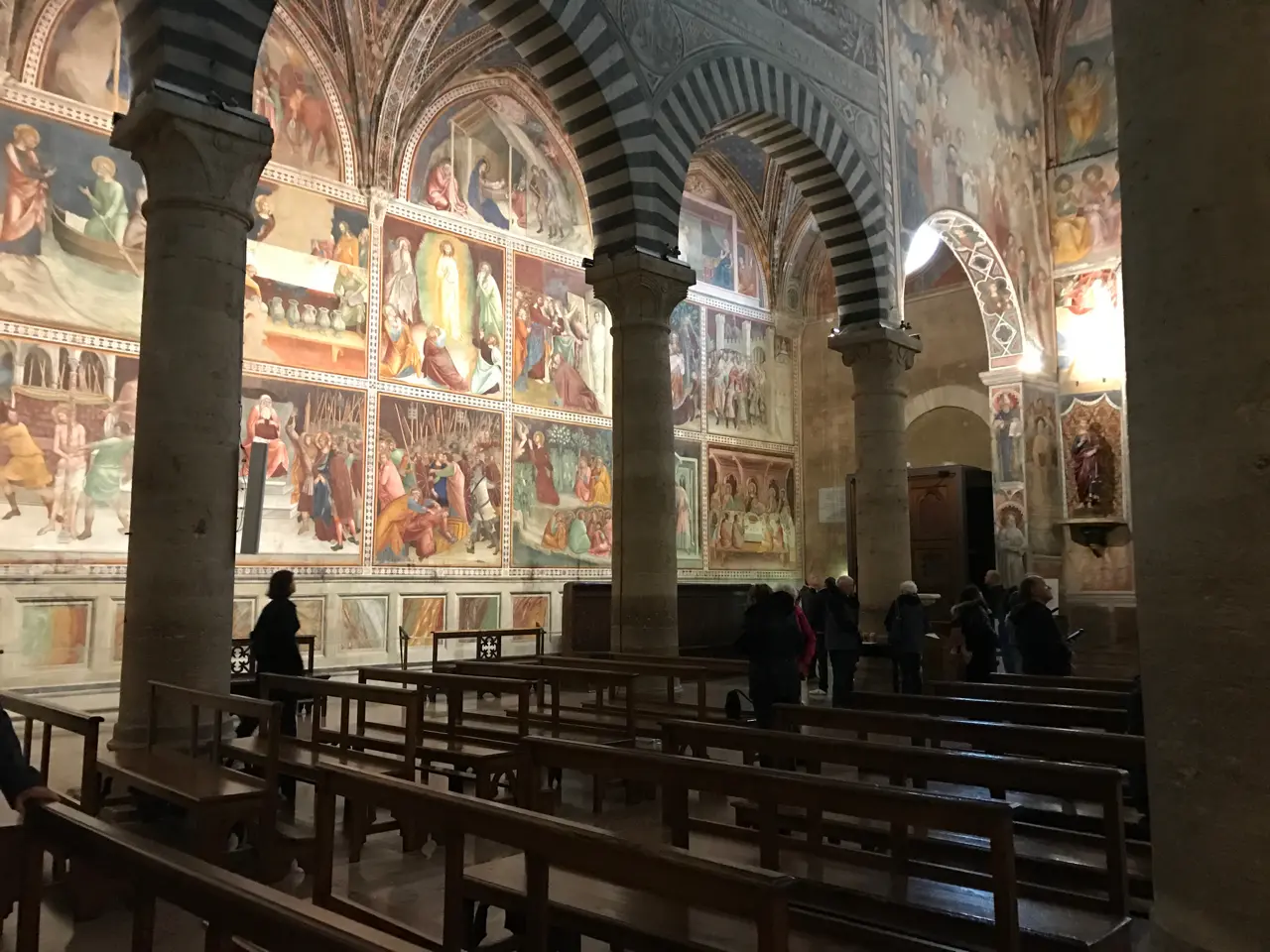
The Museo d’Arte Sacra spans two floors and preserves paintings, relics, liturgical objects, and sculptural works from the Duomo and surrounding churches.
A notable piece is the Madonna of the Roses by Bartolo di Fredi, housed in the museum rather than in the main fresco cycle.
Conservation & Restoration

Over centuries, the Duomo underwent periodic repairs and conservation, especially to preserve the frescoes and structural integrity.
Today advanced climate control, lighting, and monitoring help protect the delicate art while accommodating visitors.
Role in Town Life

Piazza del Duomo has been the religious and political heart of San Gimignano since medieval times, surrounded by the Palazzo Comunale and towers.
The Duomo was not just a sacred space, but also a place where civic identity, patronage, and public ritual intersected.
Modern Visitor Experience

Today’s visitors enter via timed or open slots, often with an audio guide (offered free) to deepen their appreciation.
The route leads through frescoed aisles, the Chapel of Santa Fina, and ends in the museum, offering a seamless narrative of art and devotion.
Digital & Future Initiatives

Digital apps, virtual tours, and augmented-reality experiences are being developed to enrich the understanding of the Duomo remotely.
These initiatives help spread awareness and promote preservation of this medieval treasure.
The Duomo in Context

The Duomo is part of a network of religious and civic sites in San Gimignano, including the Palazzo Comunale, Torre Grossa, and various chapels.
Together, they illustrate the town’s historical role as a fortified market center and a hub of medieval art and architecture.
Further Reading & Resources
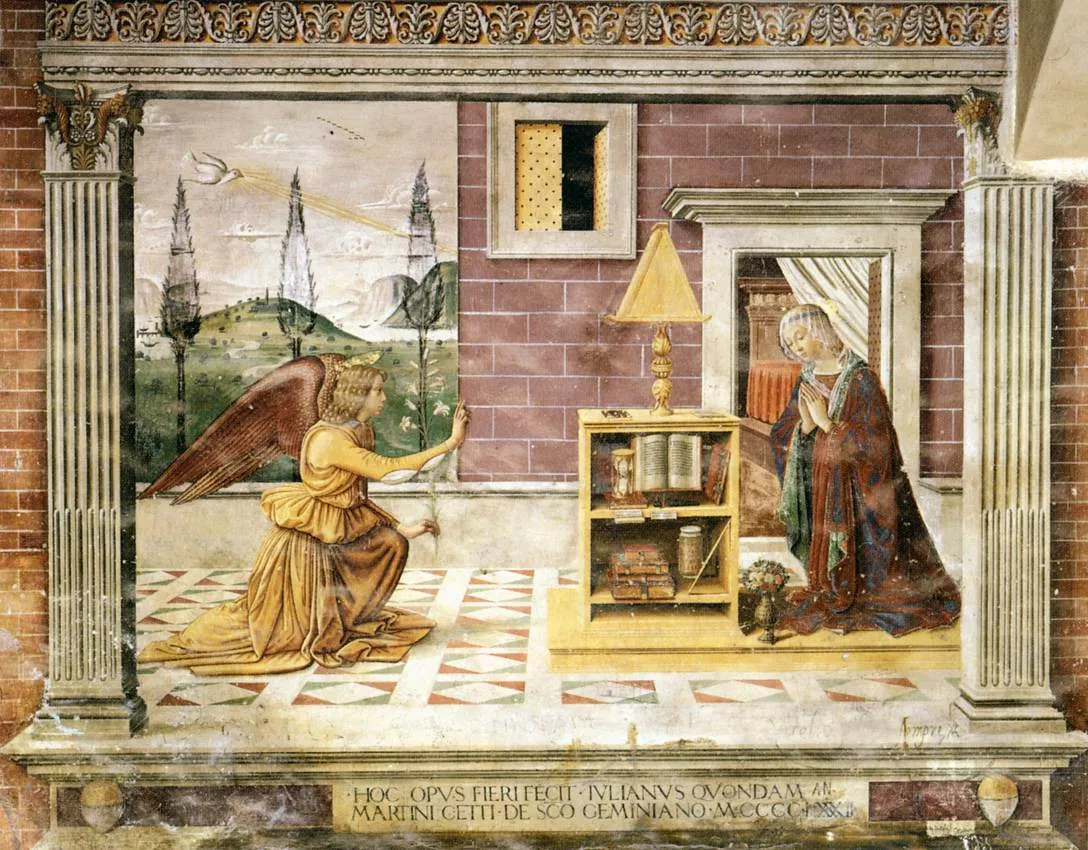
For those interested in deeper study, numerous books, articles, and online resources explore the Duomo’s art, history, and architecture.
Visiting the local library or museum shop can provide access to scholarly works and exhibition catalogs.
References & Credits

This history draws on research from art historians, conservation experts, and local archives.
Special thanks to the staff of the Duomo and Museo d’Arte Sacra for their assistance and insights.
Table of Contents
Origins & Consecration

The earliest church on this site dates to before the 12th century. In 1148 the church was consecrated by Pope Eugene III. Over time, it was enlarged and decorated to match the artistic ambitions of the town.
San Gimignano’s position along the Via Francigena and its growing prosperity fueled the desire to adorn its main church with works from the finest artists of Siena and Florence.
Medieval Expansions

In the 13th and 14th centuries, the church was expanded and restructured. The nave and aisles were extended, and large wall surfaces created ideal for fresco painting.
Leading local families and guilds sponsored chapels and fresco decorations, turning the Duomo into a canvas of civic religious expression.
Fresco Commissions

By the mid-14th century, the Old Testament cycle was painted, attributed to Bartolo di Fredi (1367).
Later, New Testament scenes were added by followers of Simone Martini and local painters, culminating in the powerful ‘Last Judgment’ by Taddeo di Bartolo.
Chapel of Saint Fina

In 1468, the city built the Chapel of Saint Fina to house her relics. Florentine master Domenico Ghirlandaio was commissioned to paint scenes from her life around 1477–78.
The chapel’s interior combines elegant Renaissance style, delicate narrative, and spiritual intimacy that contrasts with the drama of the main fresco cycles.
Artistic Schools & Influences

The Duomo displays a harmonious mix of Sienese, Florentine, and local traditions—especially visible in color palette, figure style, and iconography.
The choice of artists like Ghirlandaio, Bartolo di Fredi, and local patrons reflects San Gimignano’s desire to align with the great cultural centers.
Museum & Collection

The Museo d’Arte Sacra spans two floors and preserves paintings, relics, liturgical objects, and sculptural works from the Duomo and surrounding churches.
A notable piece is the Madonna of the Roses by Bartolo di Fredi, housed in the museum rather than in the main fresco cycle.
Conservation & Restoration

Over centuries, the Duomo underwent periodic repairs and conservation, especially to preserve the frescoes and structural integrity.
Today advanced climate control, lighting, and monitoring help protect the delicate art while accommodating visitors.
Role in Town Life

Piazza del Duomo has been the religious and political heart of San Gimignano since medieval times, surrounded by the Palazzo Comunale and towers.
The Duomo was not just a sacred space, but also a place where civic identity, patronage, and public ritual intersected.
Modern Visitor Experience

Today’s visitors enter via timed or open slots, often with an audio guide (offered free) to deepen their appreciation.
The route leads through frescoed aisles, the Chapel of Santa Fina, and ends in the museum, offering a seamless narrative of art and devotion.
Digital & Future Initiatives

Digital apps, virtual tours, and augmented-reality experiences are being developed to enrich the understanding of the Duomo remotely.
These initiatives help spread awareness and promote preservation of this medieval treasure.
The Duomo in Context

The Duomo is part of a network of religious and civic sites in San Gimignano, including the Palazzo Comunale, Torre Grossa, and various chapels.
Together, they illustrate the town’s historical role as a fortified market center and a hub of medieval art and architecture.
Further Reading & Resources

For those interested in deeper study, numerous books, articles, and online resources explore the Duomo’s art, history, and architecture.
Visiting the local library or museum shop can provide access to scholarly works and exhibition catalogs.
References & Credits

This history draws on research from art historians, conservation experts, and local archives.
Special thanks to the staff of the Duomo and Museo d’Arte Sacra for their assistance and insights.